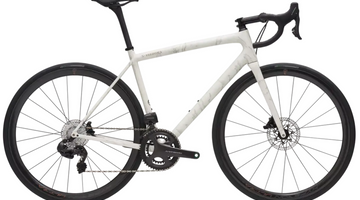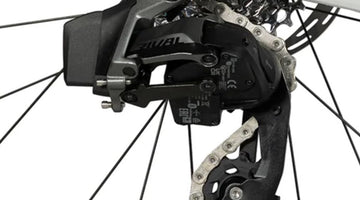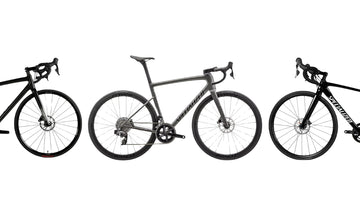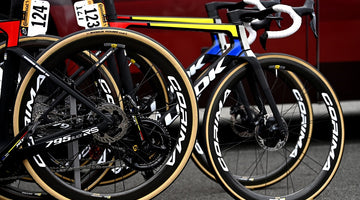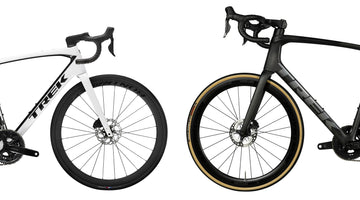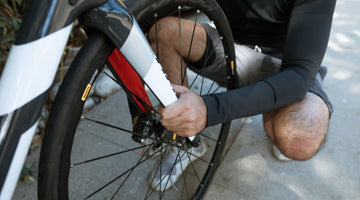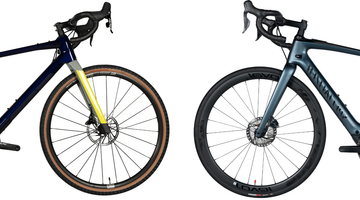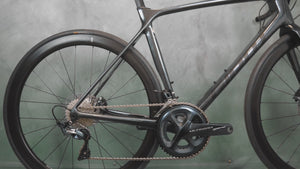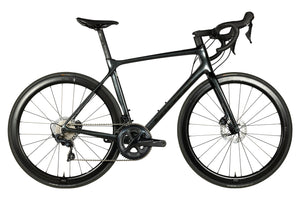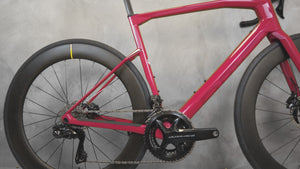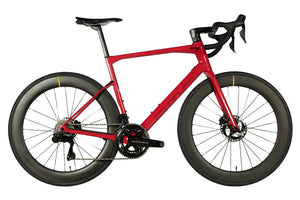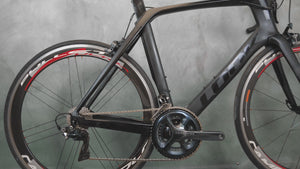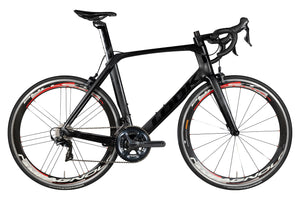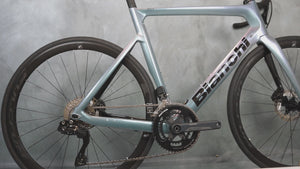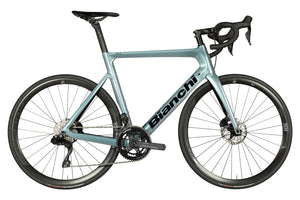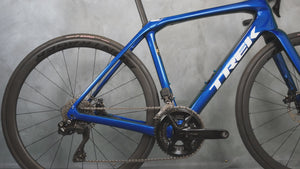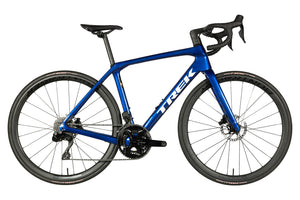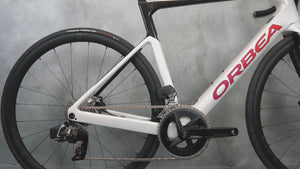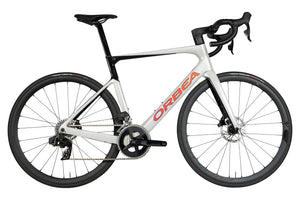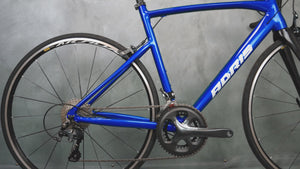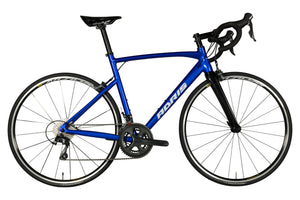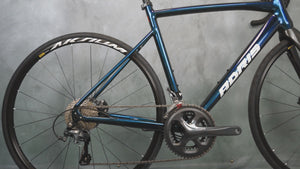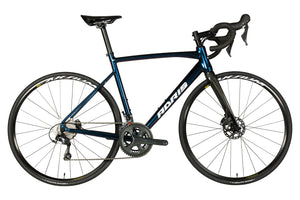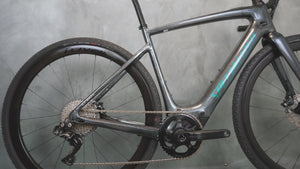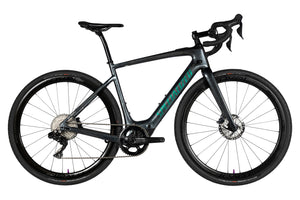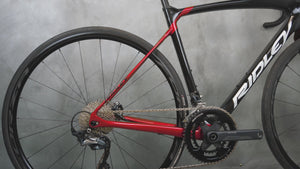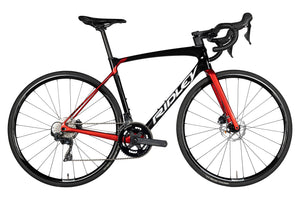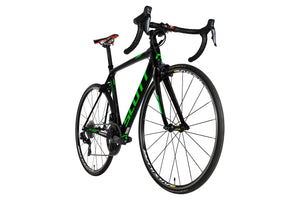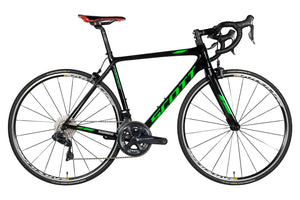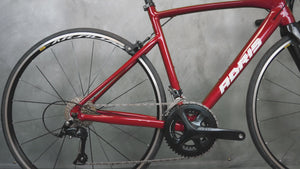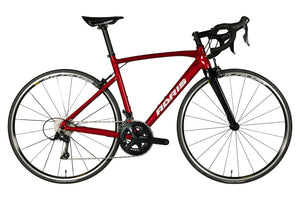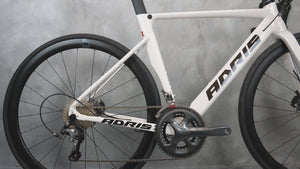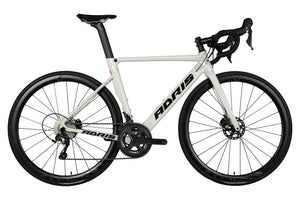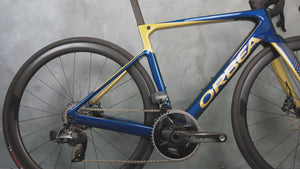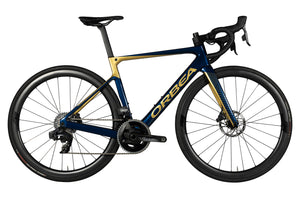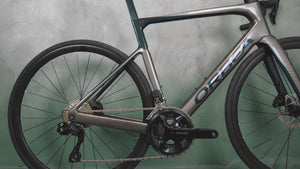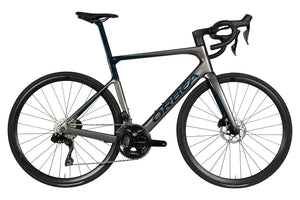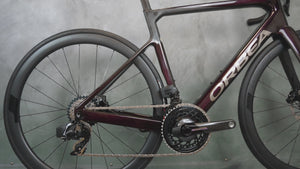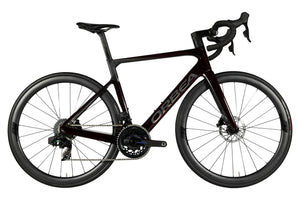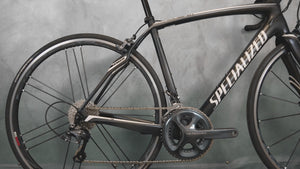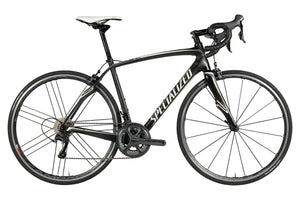Disc brake or pad brake for road bikes: which one to choose?
In this Article
Published on May 9, 2022
« Absolute stopping power isn't what makes discs fun, it's the ability to be able to stop using just one finger, regardless of the weather ».
« In the long run, it's a losing battle: the world will go to disks. In the short term, I'm buying my buddies' old wheels with skate brakes for a fraction of what they paid. »
That's what you hear in most bike cafes about the evolution of the road bike brake market in two sentences...
So what exactly are road bike disc brakes, and what's all the fuss about? Are they really any different from other recent advances in the bike world? And which braking system performs better when comparing disc brakes and rim brakes? For a complete review of all types of road bike brakes, refer to our beginner's guide to road bike brakes !
Brake pads vs. disc brakes: basics
The most fundamental difference between traditional rim brakes and disc brakes is where the braking forces are applied.
As the name suggests - and as has been done for decades - rim brakes attach directly to the sides of the rim itself. In this way, the rim serves as the main structural component of the wheel, the mounting base for the tire, and the braking surface.

Disc brakes, on the other hand, transfer all braking functions to a separate, much smaller diameter rotor mounted directly on the hub, as is the case with cars or motorcycles, and virtually all other wheeled vehicles.
The brake caliper is still mounted on the frame and fork, but it is located much closer to each wheel axle.
Another key difference is how each type of brake works. With few exceptions, shoe brakes are cable-operated, which means that the levers are connected to the caliper by braided steel cables (Bowden cablesto use the technical term) that slide into a kind of housing.
You pull the lever, which then pulls the cable, forcing the caliper to grip the rim.
Disc brakes are most often fully hydraulic, and the cable and housing are replaced by an incompressible fluid and hose in a completely sealed system.
There are also cable disc brakes. They are less expensive and slightly less effective than hydraulic disc brakes, mainly due to friction and cable stretch, and are usually found on more affordable road bikes.
6 advantages of disc brakes
Disc brakes have been used on road bikes for years, but over the past two seasons they have become more commonplace, with major bike manufacturers offering disc-equipped models in all segments of the market, from gravel bikes to endurance bikes to the various categories of road racing bikes. With the UCI now allowing them in the professional peloton, discs are becoming an increasingly important part of the road cycling landscape.
1. Disc brakes provide power in all circumstances
Road disc brakes offer consistent braking performance in all weather, with lighter lever action and better control of braking power for a wide range of riding styles. This can be very helpful on long, steep descents, or for heavier riders who have trouble finding enough power in traditional brakes (the same problem applies to heavier bikes, such as touring bikes and tandems).
"Absolute stopping power isn't what makes discs enjoyable, it's the ability to be able to stop using only one finger, regardless of the weather.
An added bonus is that braking power can be increased (or tempered, depending on your preference) by changing the rotor size. A larger rotor will increase mechanical leverage and heat dissipation, while a smaller rotor will allow riders who don't need the extra braking force to go lighter. And since braking goes hand in hand with speed and transmission, don't forget to read our guide to criteria for choosing between electric and mechanical transmission !
2. Disc brakes offer more braking precision
Disc brakes offer better modulation than shoe brakes, which means it's easier for the rider to precisely meter the amount of clamping power generated. Maximum braking power is just before the lock-up point, and disc-equipped bikes are better equipped to flirt with this limit without crossing it.
3. Disc brakes allow more flexibility in wheel width
Off-road cyclists, whether they're mountain bikers, cyclocross racers, gravelers or bike tourers, love disc brakes because they allow for wider rims and more tire clearance. Without a caliper, there's more room for the wheel, and some disc brake road bikes can now accommodate 38mm wide tires.
4. Disc brakes are more robust
Disc brake performance is not affected by wheel alignment; the brakes work even if the wheels are not properly aligned. In contrast, rim brakes will not work properly if the wheels are damaged or warped. In addition, a bike with disc brakes can still be ridden with a broken spoke or damaged rim, problems that can bring a bike with skate brakes to a screeching halt.
For more tips on how to care for your brakes and packing your bike before transport (believe us, this is often the main cause of damage), don't hesitate to consult our guide.
5. Disc brakes offer better safety
Disc brakes are known not only for their incredible performance but also for their safety.
It can be relatively easier to brake in dry weather than in wet weather. Bike manufacturers now make pads that distribute heat evenly and are suitable for carbon wheels.
6. Disc brakes reduce wheel wear
Disc brakes wear less than shoe brakes. That means your wheels will last longer.
Shoe brakes can cause wear on wheel surfaces, especially when the brakes are exposed to grit and dirt. Disc brakes don't suffer from heat build-up on the frame, which reduces wheel wear. So in the long run, you'll be happy to change only your discs (40 to 100€) and not your complete wheels (300 to 2000€).
5 advantages of pad brakes
1. Shoe brakes are lighter
The main advantage of shoe brakes over disc brakes is that they are lighter. With all the parts, pads, components and rotor, a disc brake is usually a few hundred grams heavier than a comparable rim brake. Of course, there are super light disc brake systems, but they will cost you a lot of money.
If you're looking to optimize the weight of your bike, the type of braking system is an additional criterion to the choice of frame material (carbon frame vs. aluminum frame) and the type of transmission.
2. Shoe brakes are easier to choose, install and maintain
The pads on a disc brake are much smaller and tighter fitting than those on rim brakes, which is ideal for keeping water and grit out, but also much harder to maintain. If the disc brake rotor becomes bent or slightly misaligned, many riders experience a rubbing or squealing noise from their brakes. Needless to say, shoe brakes do not have this problem.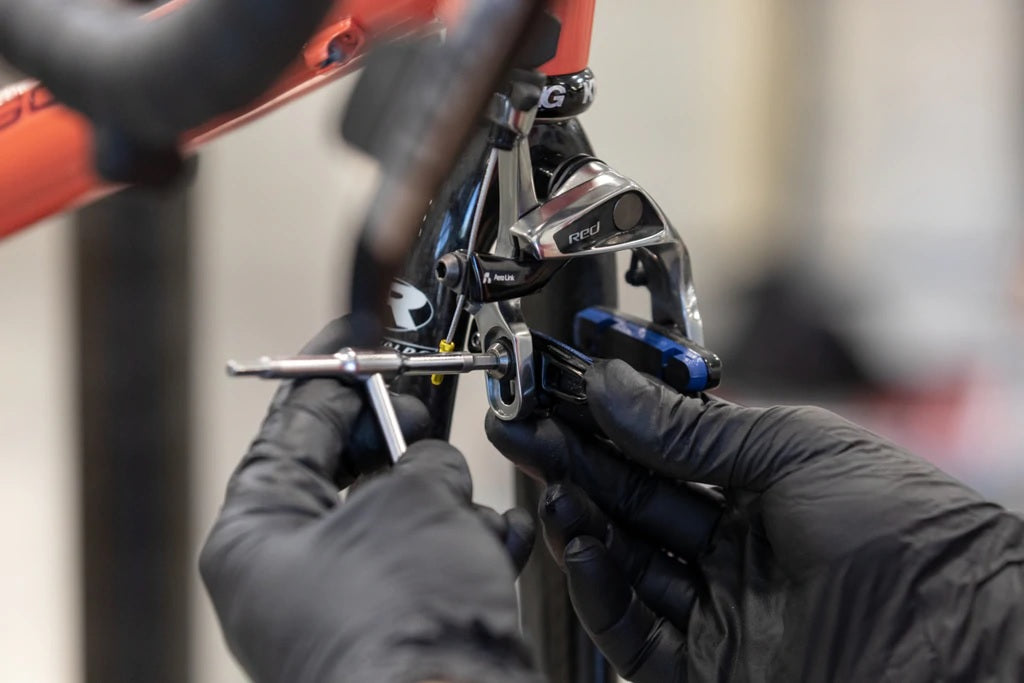
At The Cyclist Houseall our have been inspected and tuned by our mechanics. Whatever braking system you choose, your bike is ready to ride immediately.
3. Shoe brakes are slightly more aerodynamic
Some manufacturers have stated that the skid brake version of a given bike is more aerodynamic than the disc brake model, but it's not as simple as saying that rim brakes are always more aerodynamic. Further studyFurther studies, especially in the wind tunnel, show that disc brakes do not necessarily lead to an increase in drag. It depends on how the brakes are integrated into the system, but the general statement that disc brakes have a negative impact on aerodynamics is not accurate.
4. Shoe brakes have a more streamlined aesthetic
The end of the pad brake means that the road bike profile that many of us learned to ride on may be gone forever. The elegant quick-release also has its days numbered, as the thru-axle is a much safer way to mount a disc wheel. Elegant, lightweight 23mm or even 25mm tires are on their way out because the disc allows for faster, softer 28mm (and larger) tires. Also, manufacturers have all but stopped developing new rim brake wheels. The new Dura-Ace groupsets or even reference bikes like the Tarmac SL7 from Specialized no longer offer a rim brake option.
5. Shoe brakes cost less
Your bike will cost you more in its disc brake version. There are several reasons for this, not the least of which is the cost of producing a frame suitable for a disc brake. This is because the braking forces are applied to the non-motorized side of the bike. In direct opposition to the center of the bike via a traditional caliper.
Then there's the cost of the braking components themselves, of course. They cost more to produce because of the complexity of these parts. Especially in the preferred and recommended hydraulic format. As you can imagine, there's a lot going on inside an 11-speed hydraulic shifter.
In conclusion
Disc brakes are superior to shoe brakes in more ways than one, but for some cyclists, the advantages do not outweigh the disadvantages. Despite all the performance advantages, disc brakes can be more difficult to install and maintain, and they are heavier than rim brakes. In addition, bikes with disc brakes are generally more expensive than those with rim brakes, and there is no compatibility between the two.
Rim brakes still work very well. For a road bike that doesn't see a lot of dirt and mud, high-quality, well-maintained skid brakes do a great job of controlling speed on downhills and stopping the bike quickly. Rim brakes are always more affordable than disc brakes, are easier to adjust, and you'll be able to see when the pads are worn.
The design and operation of modern skate brakes are better than ever, and they are not necessarily less aerodynamic than disc brakes. Just look at what the Ineos Grenadiers have won in the last two years: a Tour de France, two Giros d'Italia and the Olympic road race, all with rim brakes!
Whatever your decision, know that at The Cyclist House offers you a selection of used bikes with disc brakes or with shoe brake. At The Cyclist Houseevery used bike is Certified Pre-Owned and has undergone a strict inspection and a 114-step tune-up. The bike of your dreams is delivered directly to your home and includes a 12-month warranty.




